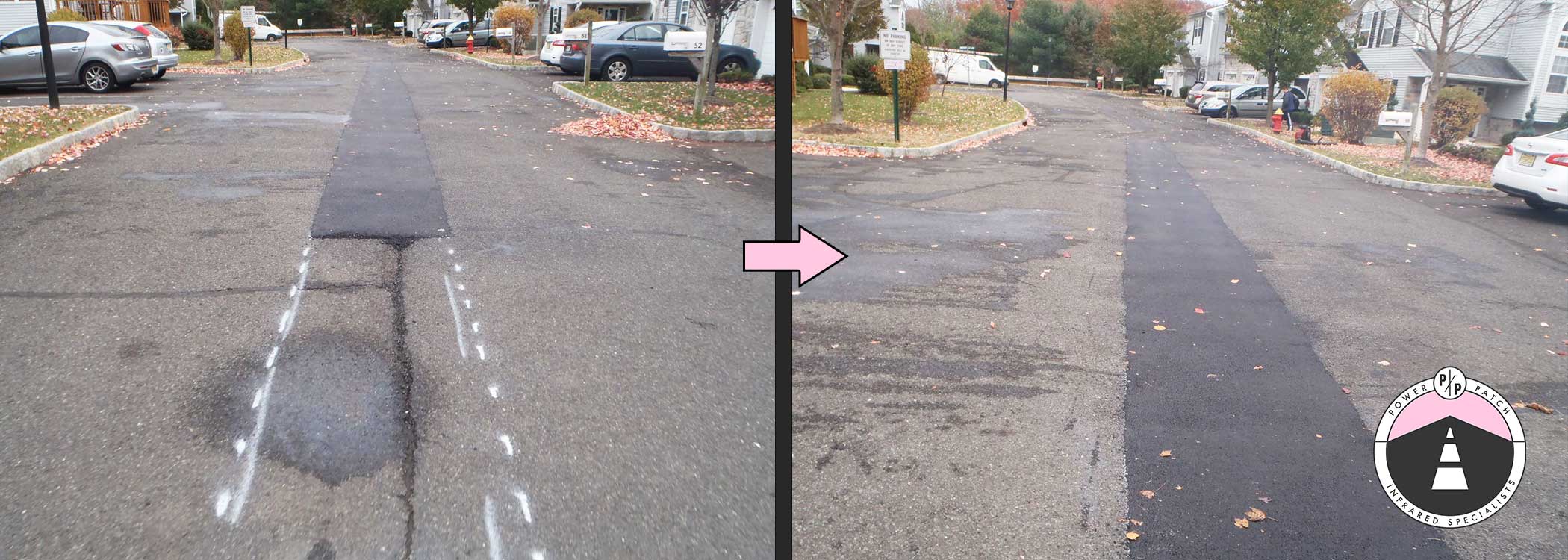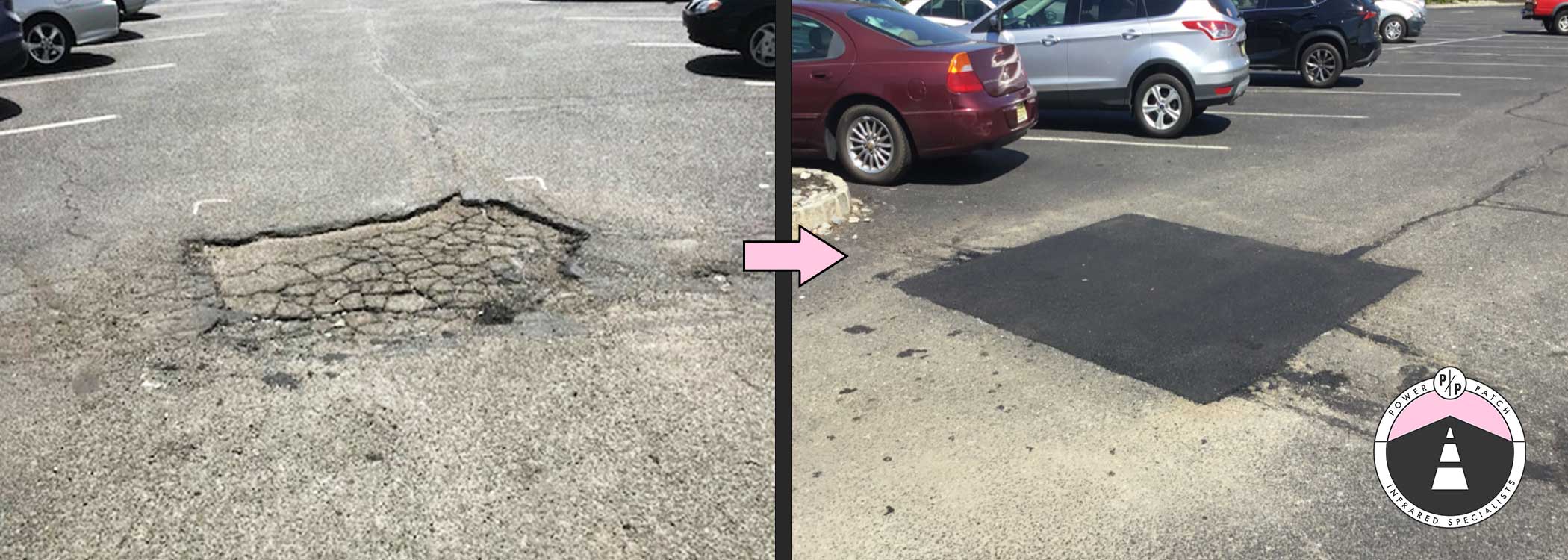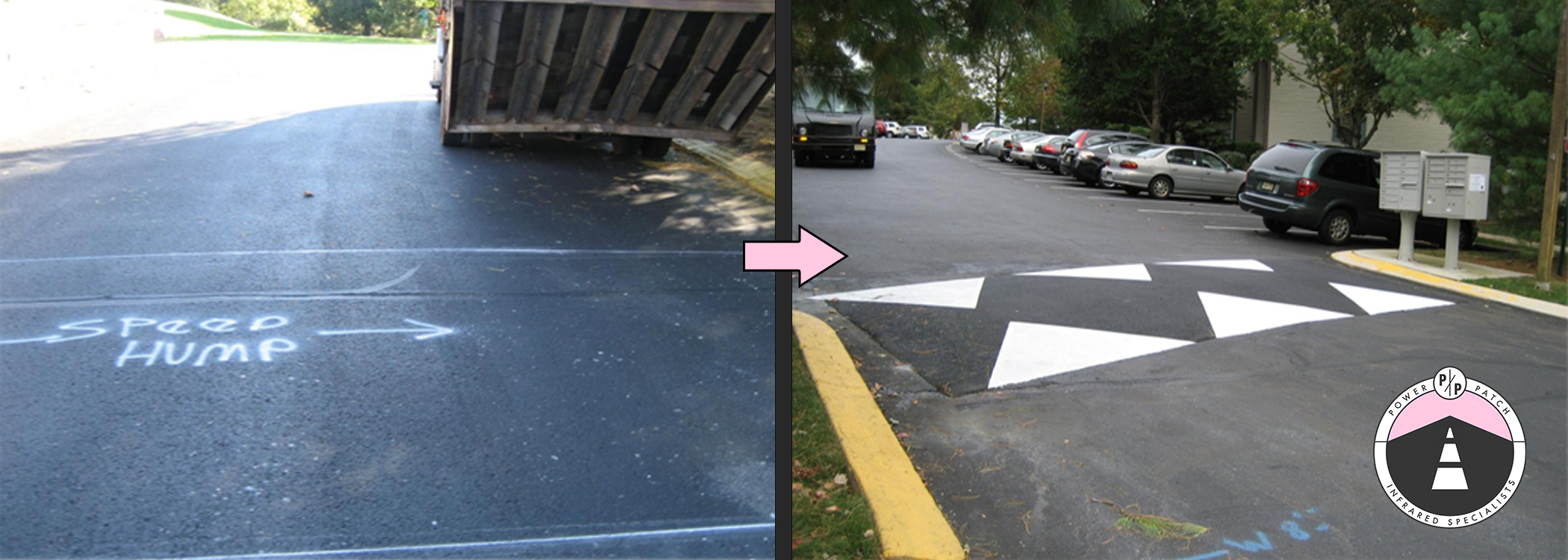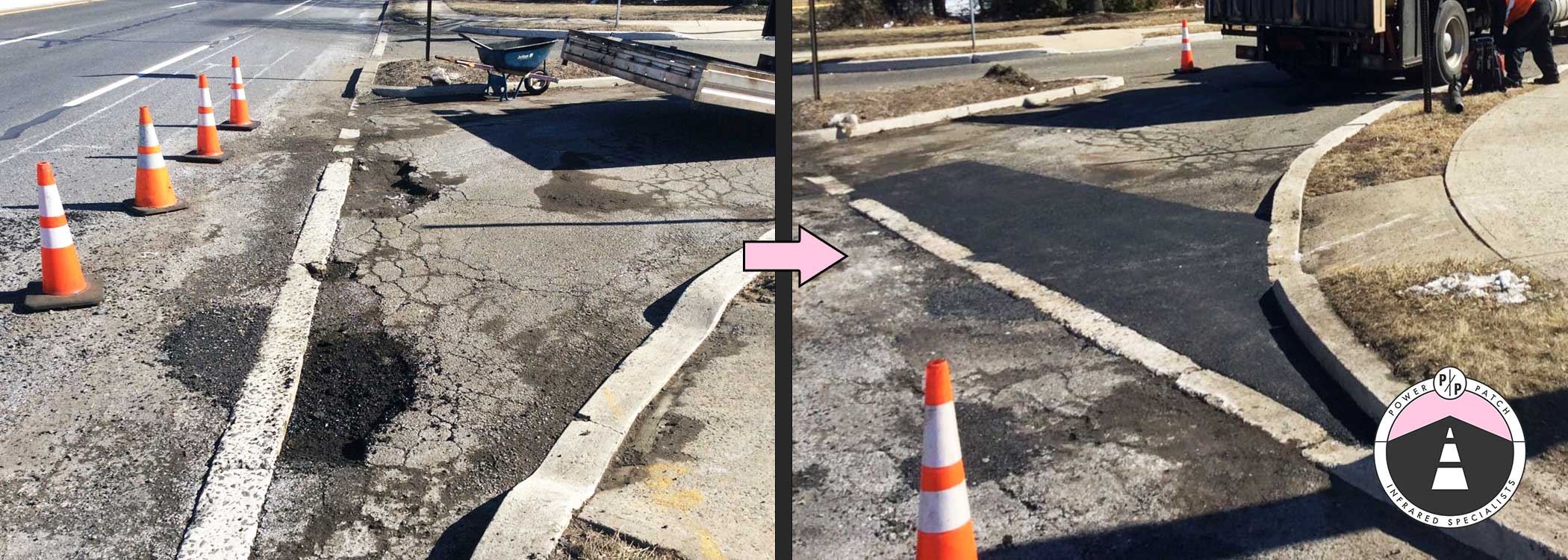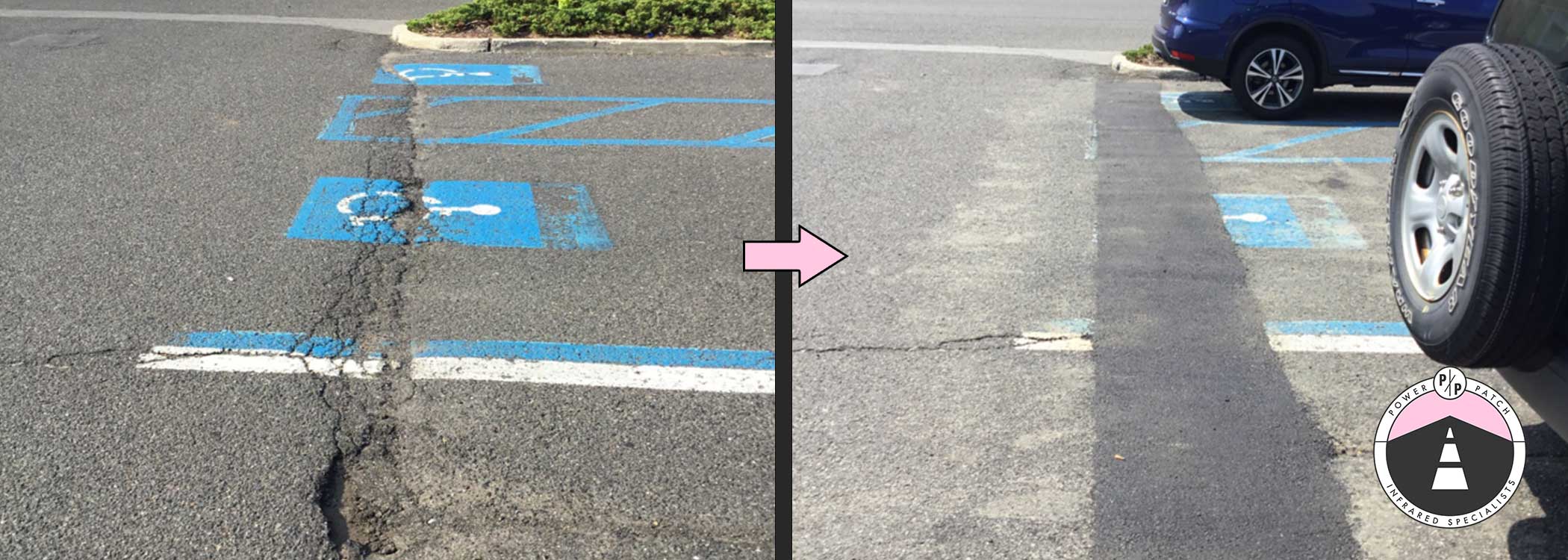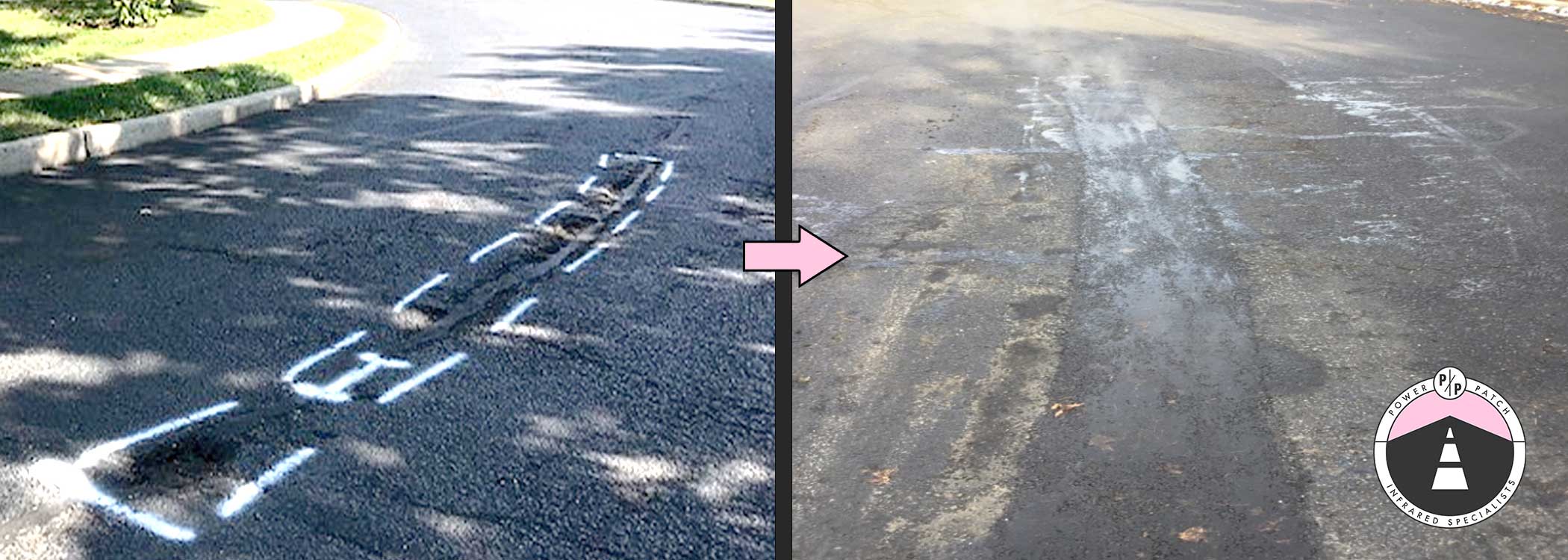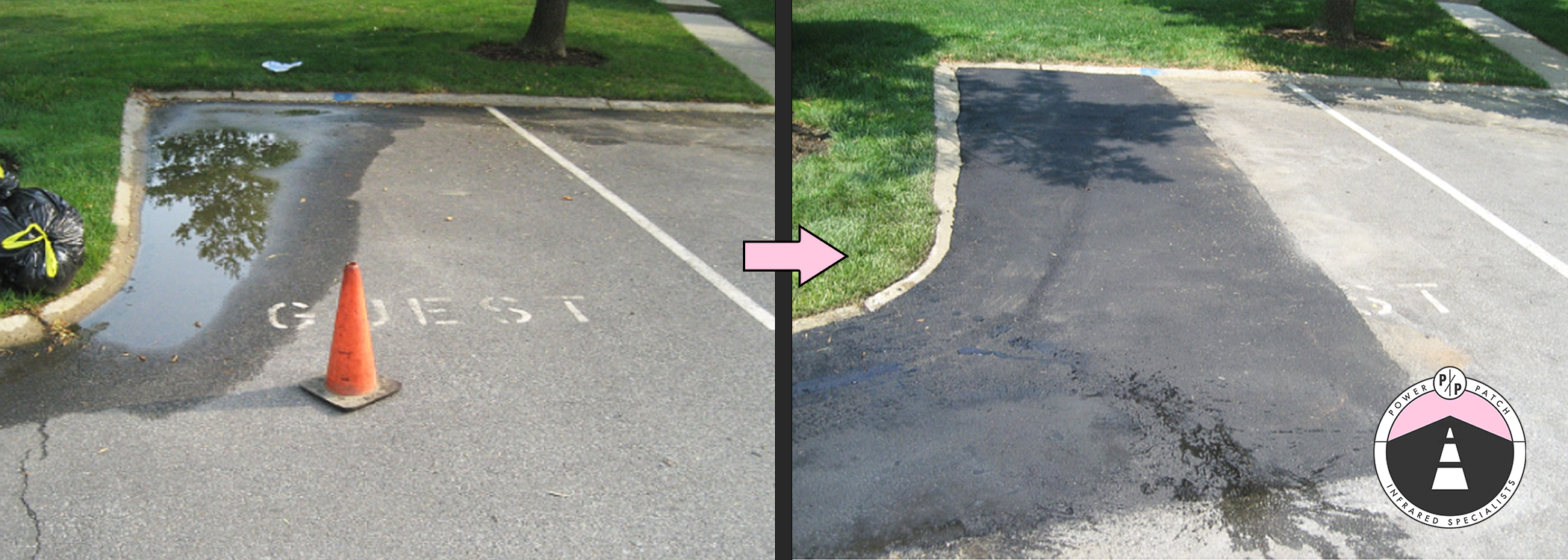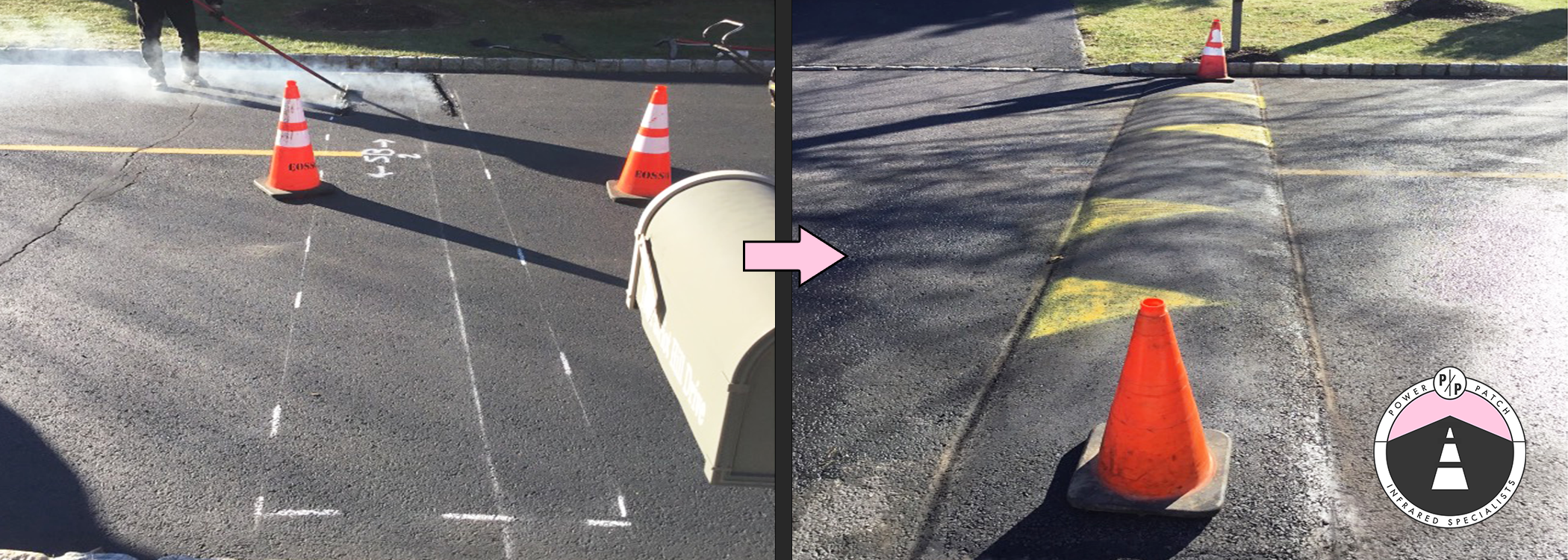Potholes are unsightly, frustrating, and also a huge liability issue. They contribute to slip and fall hazards, allow water to collect inside which will rapidly deteriorate the surrounding pavement and can even cause damage to vehicles. When you notice a pothole, it’s time for repair work and infrared patching.
How Do Potholes Form?
Potholes begin with cracks in asphalt that are not repaired promptly. When cracks are left unrepaired, water infiltrates and erodes the asphalt sub-base, creating voids that turn into potholes. Untreated cracks will continue to grow downward into the asphalt and outwards on top of the pavement, making it essential to fix cracks as they appear if you want to prevent more potholes from forming.
New Jersey has severe freeze/thaw cycles during winter that accelerate the process of crack and pothole formation. This is why new potholes can pop up seemingly overnight coming out of winter as the weather improves and the ground thaws out.
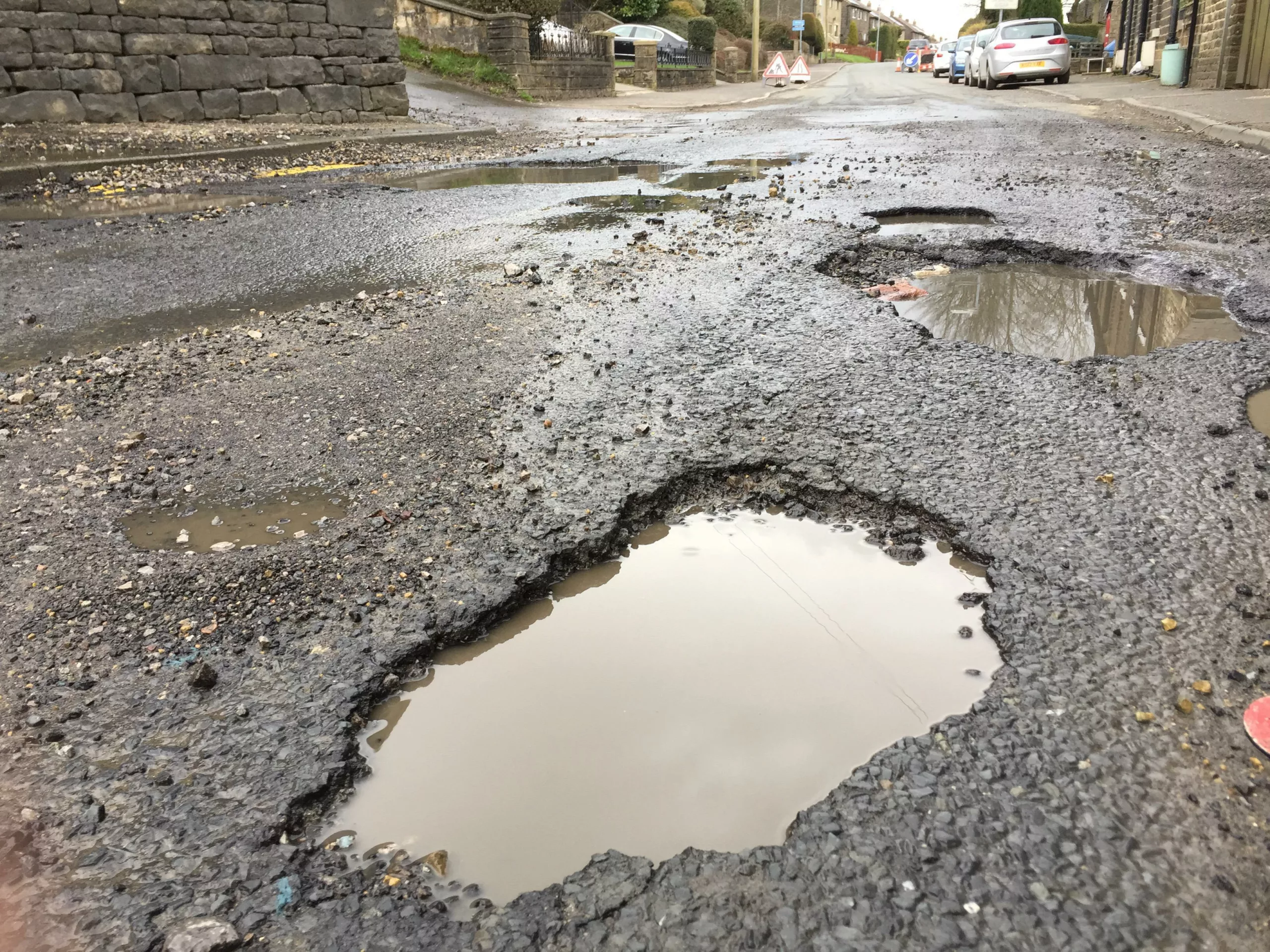

How Are Potholes Repaired?
Infrared patching is a permanent repair solution that can last for years. It’s also the quickest, most cost-effective, and most environmentally friendly way to repair most potholes. The conventional repair method involves full depth reconstruction where an area of pavement is cut out completely and rebuilt through milling and repaving, which is costly and requires much more material and labor. With infrared patching technology, you get a lasting repair, even during extremely cold weather, so it doesn’t evolve into a larger problem.
It’s important to stay proactive with pavement maintenance, which includes annual crack filling and infrared patching of potholes. Crack-filling is a proven maintenance procedure to help keep water from entering cracks and deteriorating asphalt sub-base and can prevent new potholes from forming.
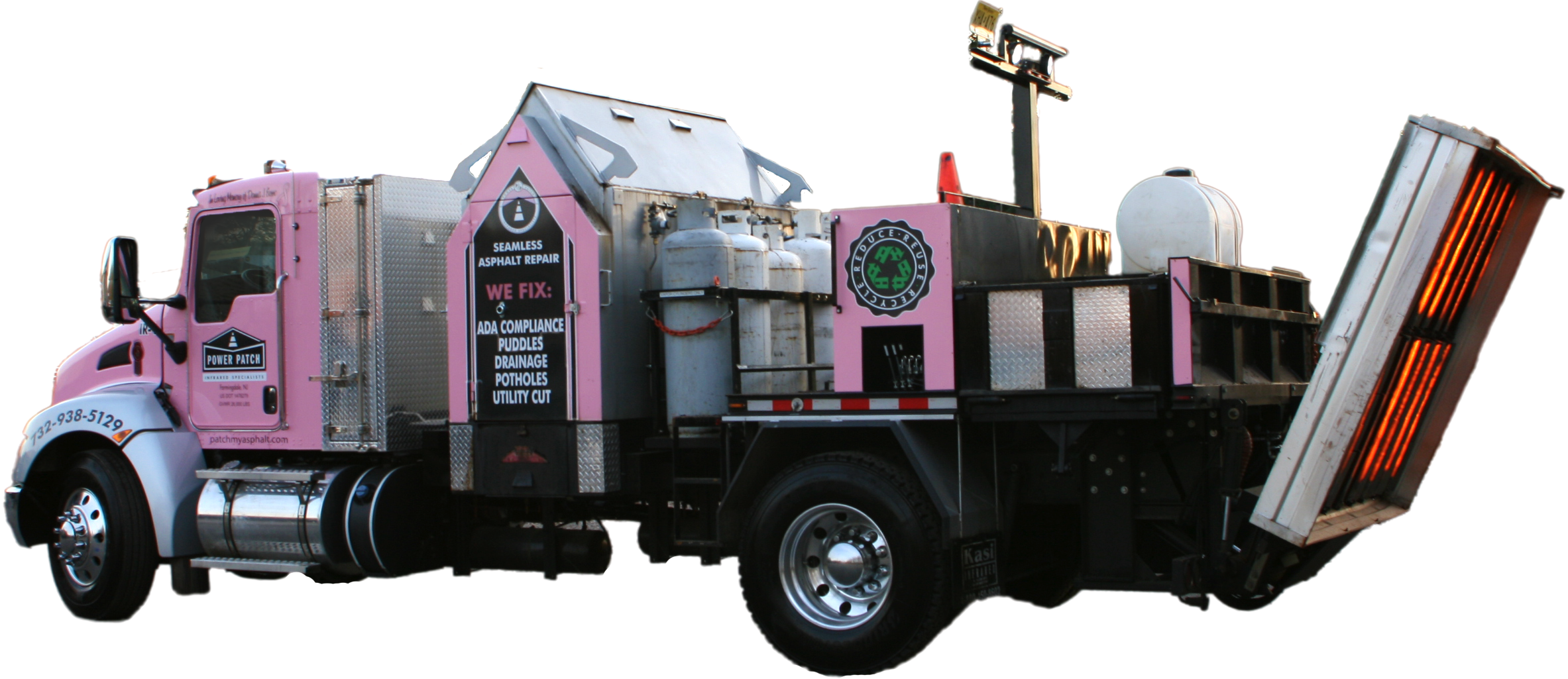

One unit. No seams. One hot concept in asphalt repair.
We are the pavement problem solvers.




